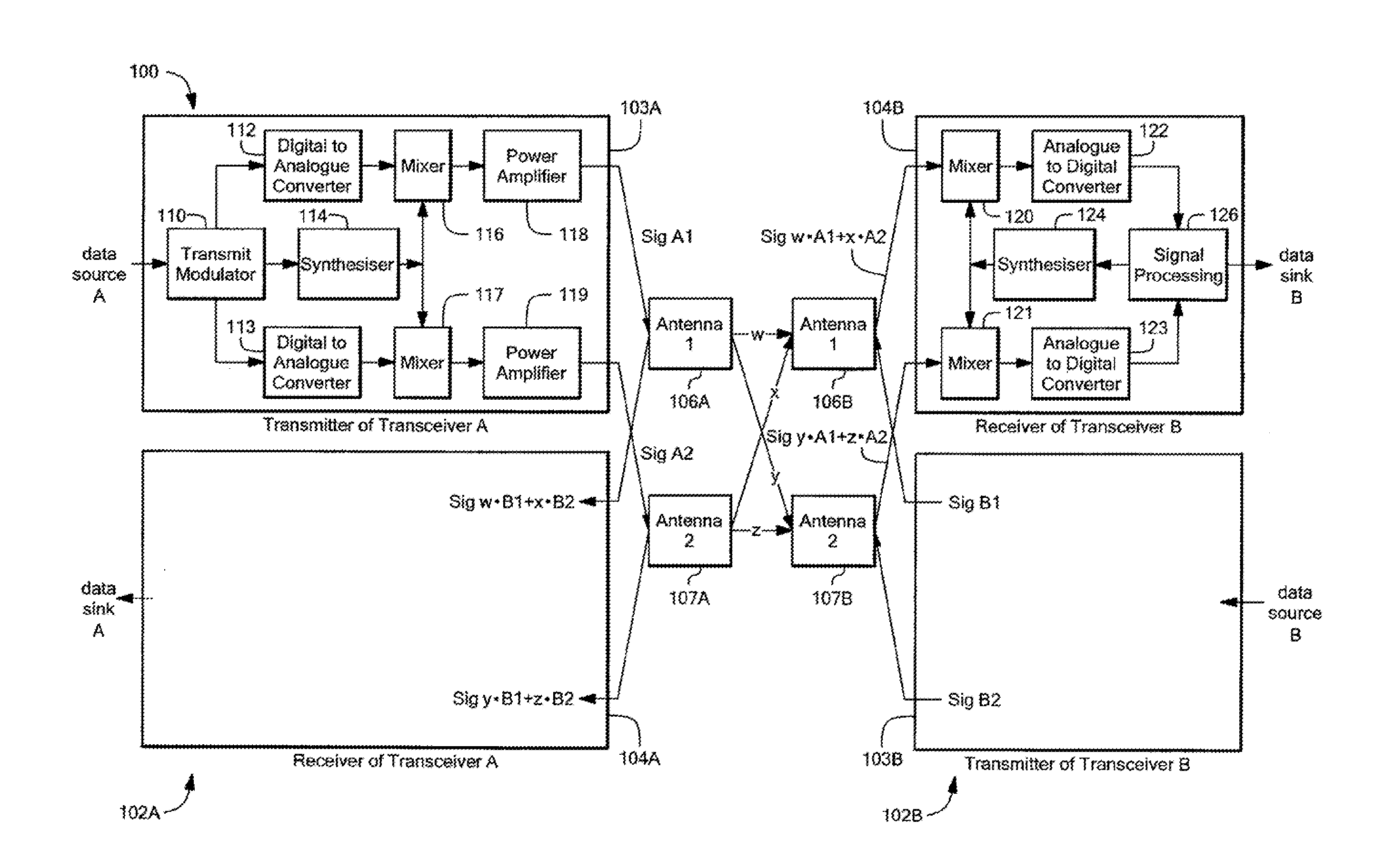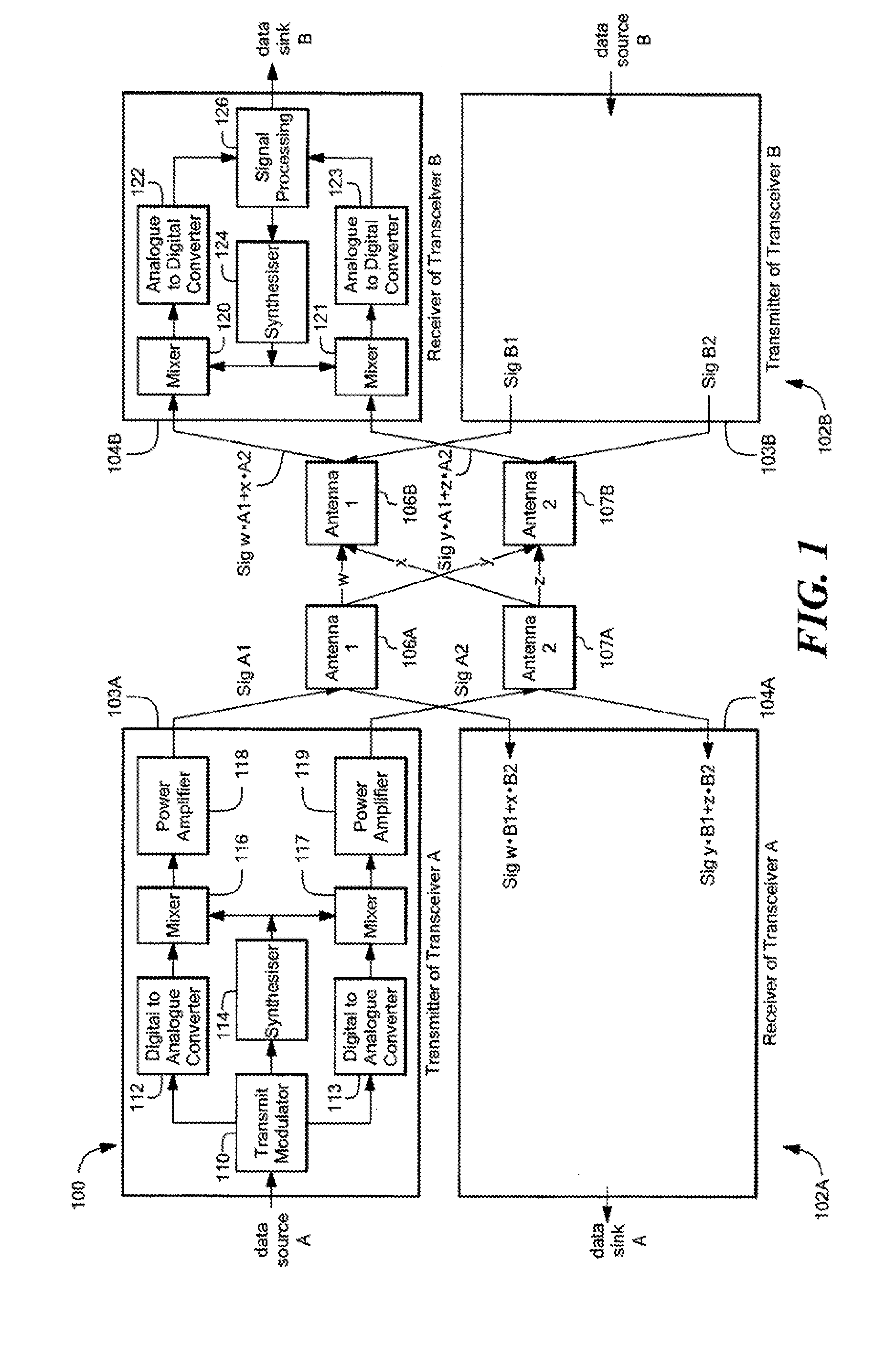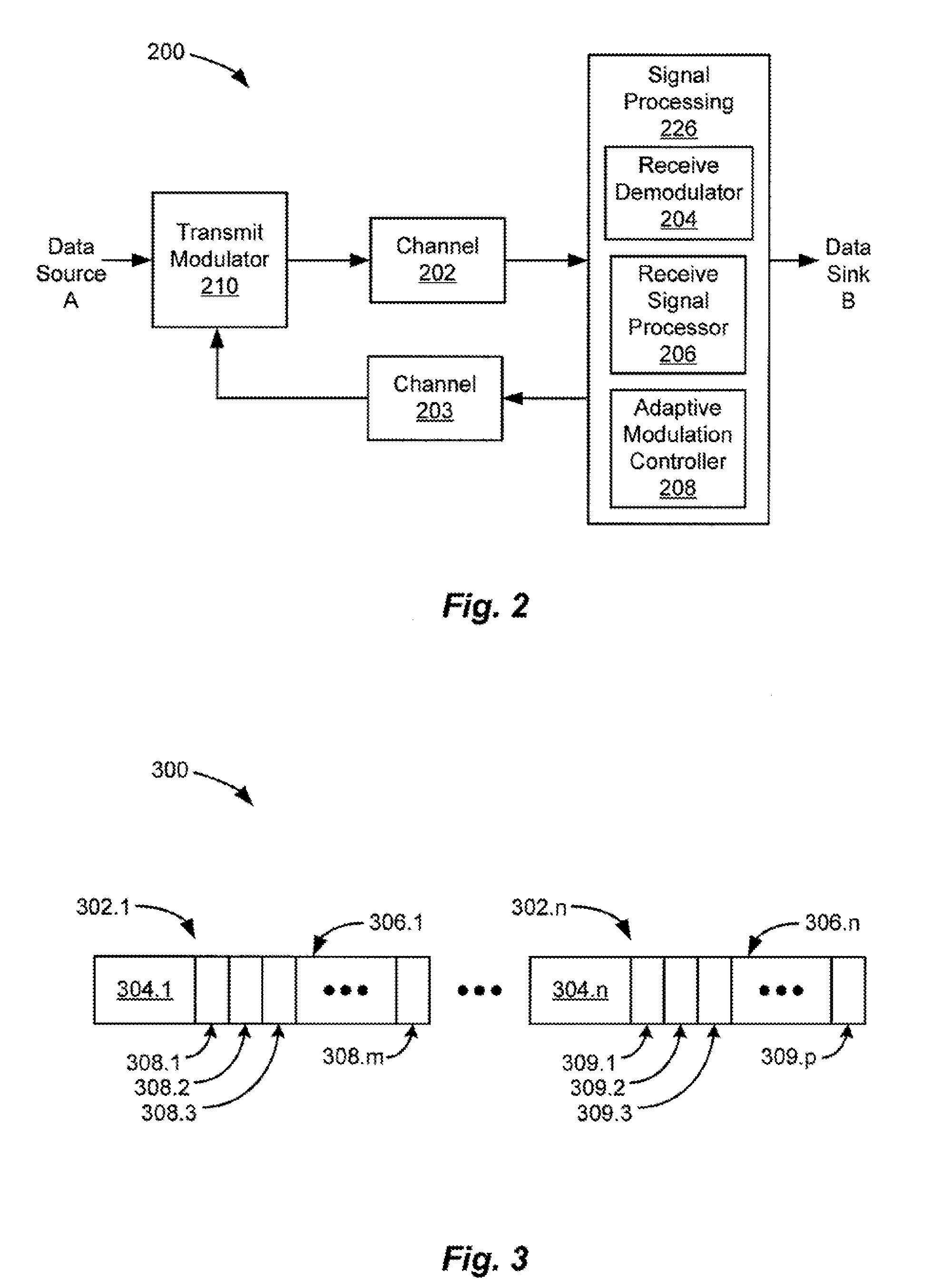Self optimization of time division duplex (TDD) timing and adaptive modulation thresholds
a time division duplex and adaptive modulation technology, applied in the field of wireless broadband communication systems, can solve the problems of significantly limiting the data throughput of conventional wireless broadband communication systems in long-range applications, system drawbacks, and traditional high latency, and achieves the effects of increasing data throughput, and reducing packet error rates
- Summary
- Abstract
- Description
- Claims
- Application Information
AI Technical Summary
Benefits of technology
Problems solved by technology
Method used
Image
Examples
first embodiment
[0029] The embodiments of the present invention will be better understood with reference to the following illustrative example and FIGS. 1-3. As described above, the wireless communication system 100 (see FIG. 1) includes the transceivers 102A-102B, which may be deployed at opposite ends of a communication link (not numbered). In this illustrative example, the transceiver 102A is operative to transmit a predetermined number “n” of data bursts over the channel 202 (see FIG. 2) from one end of the communication link to the other end of the link, and the transceiver 102B is operative to receive the predetermined number n of data bursts. Further, the size of the transmit bursts is adjusted to correspond to one of a predetermined number “N” of burst sizes. In this example, the predetermined number n of data bursts is equal to 19, and the size of each transmit burst is adjusted to one of N=4 burst sizes, which correspond to 10, 20, 30, or 40 OFDM symbols. Each burst received by the trans...
second embodiment
[0031] In a second embodiment, based upon the adjusted transmit burst size determined above, the transceiver 102B selects the modulation mode for the next predetermined number n of bursts, and provides a command to the transceiver 102A to employ the selected modulation mode via the control channel 203. It is noted that employing the selected modulation mode may involve adjusting the modulation threshold level, the coding rate, the symbol rate, the transmission power level, the antenna directional parameters, the space-time coding parameters, and / or any other suitable transmission parameter. In this example, the selected modulation mode has a corresponding packet error rate. In general, if the index t corresponds to the size of the transmit burst, then for each successive increase in the value of the index t indicating a stepped increase in the transmit burst size, the modulation mode is selected to provide a successively higher packet error rate. As indicated above, the N=4 burst si...
PUM
 Login to View More
Login to View More Abstract
Description
Claims
Application Information
 Login to View More
Login to View More - R&D
- Intellectual Property
- Life Sciences
- Materials
- Tech Scout
- Unparalleled Data Quality
- Higher Quality Content
- 60% Fewer Hallucinations
Browse by: Latest US Patents, China's latest patents, Technical Efficacy Thesaurus, Application Domain, Technology Topic, Popular Technical Reports.
© 2025 PatSnap. All rights reserved.Legal|Privacy policy|Modern Slavery Act Transparency Statement|Sitemap|About US| Contact US: help@patsnap.com



